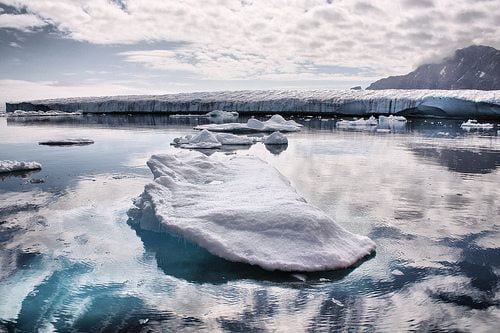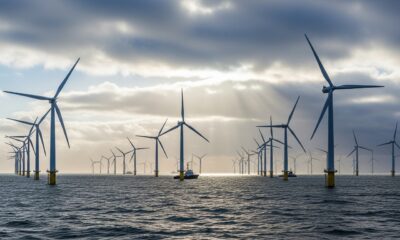

Environment
Worries over melting of previously ‘stable’ Greenland ice sheet
The last remaining ‘stable’ corner of the Greenland ice sheet is stable no more, with a potentially devastating impact on global sea levels, scientists have found.
The Greenland ice sheet – the only ice sheet to exist outside of Antarctica – covers about 80% of the country.
Scientists already know that it has been one of the biggest contributors to rising sea levels over the last 20 years as climate change has caused regional temperatures to warm.
However, in a report published on Sunday in the journal Nature Climate Change, researchers reported that the north-east corner of the ice sheet has lost more than 10 billion tons of ice per year since 2003.
This is far more than scientists had previously thought.
“North-east Greenland is very cold. It used to be considered the last stable part of the Greenland ice sheet”, explained Michael Bevis of the Ohio State University, a co-author of the study.
“This study shows that ice loss in the north-east is now accelerating. So, now it seems that all of the margins of the Greenland ice sheet are unstable.”
The researchers suggest that a succession of unusually warm summers is responsible for the sudden trend.
Though they stress that Greenland’s processes are very difficult to predict, the scientists warn that this melting could kickstart a feedback loop.
Now that the ice in the north-east is retreating, the ice barrier in the bay is reduced, allowing melting glaciers to speed up and decrease the ice mass of the main basin.
The Greenland ice sheet accounts for an increase in average global sea levels of 0.5mm per year – around one-sixth of the annual rise.
“The Greenland ice sheet has contributed more than any other ice mass to sea level rise over the past two decades and has the potential, if completely melted, to raise global sea level by more than seven metres”, warned Prof Jeremy Bamber of Bristol University, another co-author of the study
“Most projections of the future behaviour of the ice sheet have no, or little, contribution from [the north-eastern] part of Greenland, but these new results suggest that this region is sensitive to changes in climate and has the potential to contribute significantly now and in the future.”
In July, Greenland experienced its highest temperatures since records began, when temperatures of 25.9C (78.6F), were measured at Maniitoq Mittarfia near Baffin Bay on the west coast.
Scientists have previously calculated that if the annual average temperature in Greenland increases by 3C (5.4F), its ice sheet will begin to melt at an abnormal and potentially catastrophic rate.
Further reading:
Planet likely to warm by ‘catastrophic’ 4C by 2100
Huge melt water reservoir discovered under Greenland ice
Climate change may ‘green’ Greenland by 2100, say scientists


 Environment9 months ago
Environment9 months agoAre Polymer Banknotes: an Eco-Friendly Trend or a Groundswell?

 Environment11 months ago
Environment11 months agoEco-Friendly Home Improvements: Top 7 Upgrades for 2025

 Features8 months ago
Features8 months agoEco-Friendly Cryptocurrencies: Sustainable Investment Choices

 Features10 months ago
Features10 months agoEco-Friendly Crypto Traders Must Find the Right Exchange




























